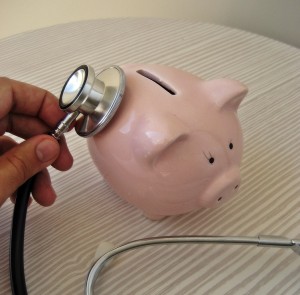
Health care costs are skyrocketing and premiums along with them forcing some employers -- especially small businesses -- to drop coverage altogether. But others are moving to "high-deductible health plans." Five times as many businesses offer high deductible health plans as in 2005, according to the UCLA Center for Health Policy Research.
But how do these plans play out for employers -- and workers themselves?
Kelley Weiss of the Center for Health Reporting found unpleasant surprises for both owners and employees. Six years ago, Casey Coonerty-Protti took over her family's business -- Bookshop Santa Cruz -- a 46 year institution in the heart of downtown. Between the lagging economy and pressure from online books, maintaining a bookstore is not easy. Protti has struggled to continue to offer health insurance. When she started, her company offered a $2,000 deductible, but she's had to steadily increase the amount of the deductible to $5,000.
From Weiss' report:
“So we’re putting in high-deductible plans and we’re saving absolutely nothing from it,” Protti says. “We’re actually increasing our costs to provide a lesser service.”
Another small business owner has a different perspective on high-deductible health plans. Anne Lesemann is the co-owner of Home Buddies, a pet care service in the Sacramento area.
She says her company will spend less than $4,000 this year to cover insurance for herself, the other owner and one employee. For her business, she says, that’s not too bad. But when she thinks of it like a patient, she admits the $5,000 deductible doesn’t look so good.
“The high deductible plans were marketed as something that would make me a savvy consumer about health care. But that hasn’t occurred,” Lesemann says.
Even though she knows better, Lesemann has been delaying going to the doctor because she doesn’t trust what’s covered and what’s not. Lesemann learned this over the years by having a variety of high-deductible health plans. One time she says she got a bill for a $1,000 after having a colonoscopy screening that she thought was a free preventative service.
Confusion over coverage and delaying care is pretty standard with high-deductible health plans, says Dylan Roby of the UCLA Center for Health Policy Research. From a cost perspective, when people don’t go to the doctor he says no one has to pay for it. For cash-strapped companies in California saving money is an attractive option.
Learn More: